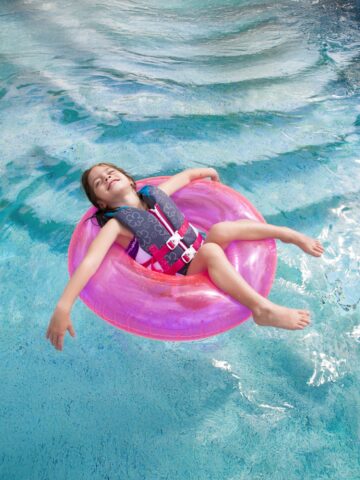By Melody Sun, clinical pharmacist at CHOC
The skin is the largest organ of the body, and our best protection against the outside environment. Sunlight stimulates the skin to produce vitamin D, however, daily prolonged exposure to radiation from the sun can cause wrinkles, freckles, and, in the worst case, skin cancer. Sunscreen can protect the skin so that it can continue to protect the rest of the body. Remember that radiation from the sun penetrates the skin even on cloudy and snowy days, so it is important to apply sunscreen whenever going outside.
Navigating your way through the endless number of products can be challenging. The active ingredients, which are listed in the Drug Facts Label, protect the skin from different types of ultraviolet (UV) radiation called UVA and UVB. UVA reaches deeper into the part of the skin that provides support and nourishment to the rest of the skin layers. UVB can damage the part of the skin that contains important structures such as blood vessels and nerve endings. Sunscreen protects the skin by reflecting or absorbing the radiation. The ‘reflective’ property is not as strong as the ‘absorptive’ property because the UV radiation can hit other areas.
Let the following table be a guide to help you understand the ingredients in your sunscreen.
Sunscreens that absorb radiation
| Active Ingredient | UVA Radiation coverage | UVB Radiation coverage | Considerations |
|---|---|---|---|
| Titanium dioxide | ✔ | ✔ | Transparent formulations available |
| Zinc oxide | ✔ | ✔ | Leaves whitened layer on skin and clothing |
Sunscreens that reflect and disperse radiation
| Active Ingredient | UVA Radiation coverage | UVB Radiation coverage | Considerations |
|---|---|---|---|
| Avobenzone | ✔ | Best UVA coverage. Must be in combination with other ingredients (ie, octocrylene). However, may degrade other sunscreen ingredients. | |
| Ecamsule | ✔ (partial) | Must be in combination with other ingredients (ie, octocrylene). Less water resistant. | |
| Oxybenzone | ✔ (partial) | ✔ | Can cause allergic reactions, not water resistant |
| Padimate-OGlycerol PABA | ✔ | Most potent UVB absorber, potential for allergic reactions (related to PABA) | |
| Octocrylene | ✔ | Stabilizes other ingredients. | |
| Octinoxate Cinoxate | ✔ | Water resistant, avoid combination with avobenzone (destabilizes avobenzone’s UVA protection). | |
| Octyl salicylate (octisalate) Trolamine salicylate Homosalate | ✔ | Stabilizes other ingredients, water resistant, less potent in UVB absorption than others | |
| Ensulizole | ✔ | Less oily application, not water resistant |
Note: The charts above are not all-inclusive.
Consider the following guidelines when making your selection:
- Make sure the combination of active ingredients covers both UVA and UVB
- If you’ll be sweating or around water, select a combination that is water-resistant.
- ‘Water resistant’ labeling means the product retains its activity for at least 40 minutes in water. ‘Very water resistant’ means at least 80 minutes.
- Will you be in the sun all day? If so, select a higher SPF depending on your skin tone and individual sensitivity to sunburns.
Consult your child’s pediatrician with questions on specific sun prevention mechanisms for your family.





